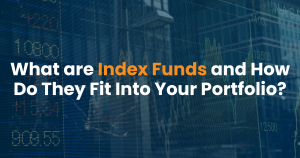Gold Prices are at All-time Highs. Is It a Good Time to Buy In? April 24, 2025

There is a clear contrast between the performance of gold, global economies, and the stock markets around the world. While economies and stock markets remain under pressure, the price of gold hit an all-time high of US$3,500 per ounce on 22 April. The combination of record gold prices and volume saw unprecedented heights, attaining the highest-ever yearly value of US$382 billion.
In January, traders in New York began stockpiling US$82bn in gold, in anticipation of tariffs under the Trump administration. With the full impact of these tariffs yet to unfold, ongoing uncertainty continues to drive strong demand for gold, reinforcing its position as a safe haven asset in turbulent times.
Why Gold Prices Are Soaring Now
Investment instruments do not operate in a vacuum. Recent developments in the economy, such as the threat and subsequent announcement of Trump’s trade tariffs, have introduced considerable uncertainty into the market. In such volatile times, gold is seen as a safe haven, offering investors a more stable place to park their funds.
Amid this backdrop, the demand for physical gold soared exponentially. To better understand this trend, here’s an overview of gold price movements over the past five years.
| Year | Average Closing Gold Price (USD/t.oz) | Year High Gold Price (USD/t.oz) |
| 2021 | US$1,798.89 | US$1,945.40 |
| 2022 | US$1,801.87 | US$2,043.30 |
| 2023 | US$1,943.00 | US$2,115.10 |
| 2024 | US$2,388.98 | US$2,785.87 |
| 2025 | US$2,869.80 | US$3,132.31 |

Factors Responsible for Rising Gold Prices
Gold surpassed the US$3,200 mark on 11 Apr, driven largely by economic uncertainty surrounding the trade war.
- Geopolitical Tensions: Conflicts and tensions create uncertainty in global markets. Escalating conflicts between Israel and Palestine, as well as Russia and Ukraine, have sent investors seeking safe haven assets like gold.
- Trade Wars: The reimposition of US tariffs and ongoing inflation are other factors that are pushing investors to seek financial security in physical gold.
- Inflation: As a physical asset, gold functions as a store of value, and doesn’t lose value to inflation. It is also immune to certain risks such as currency risk and credit risk.
- Central Bank Policies: Central banks buy gold to protect national wealth from economic fluctuations. Amid the global economic instability, central banks’ policies and continued appetite for gold add to its demand.
Gold as a Hedge Against Inflation
For centuries, gold has long been regarded as the ultimate safe haven asset, consistently outperforming other investment instruments during periods of economic uncertainty. Gold as an inflation hedge has made banks run towards it in times of economic uncertainty.
With inflation rising steadily across many regions, gold investment has regained prominence as a dependable hedge. In the current market condition, where trade wars, inflation fears, and global economic instability are looming over, the role of gold as a protection against inflation has become more significant than ever.
Fund Performance
- 1970s Inflation: During the great inflation of the 1970s, gold prices increased dramatically. For example, gold soared from US$35 per ounce in 1971 to nearly US$800 per ounce by 1980, highlighting its status as a safe-haven asset.
- Financial Crisis 2008: In the wake of the global financial crisis, central banks implemented easing policies that boosted inflation. Gold prices reached an all-time high of US$1,920/oz in 2011 as investors sought to protect their wealth.
- Recent Trends: The COVID-19 pandemic in the 2020s, caused inflation fuelled by supply chain disruptions and government expenditures. Gold prices surged again, reaching a cycle high above US$2,050 per ounce in March 2022, reinforcing gold’s role as a defensive asset.

Gold’s Performance in the Current Economic Landscape
Recent US Federal Reserve policies and international tariff announcements under President Donald Trump have triggered a major market sell-off. The S&P 500 plunged by 3.5% after Trump’s announcement to postpone higher tariffs failed to ease investor concerns over global trade tensions. At the same time, the Dow Jones Industrial Average dropped by 2.5%, while the tech-heavy Nasdaq declined by 4.3%.
In contrast, gold has continued to shine as a safe haven asset. During this period of heightened volatility, gold prices have surged by 22% year-to-date, reaching a record high of US$3,200 per ounce on 11 April.
The Bullish Case for Gold: Outlook for 2025
Gold remains one of the most trusted safe haven assets, providing a hedge not only against inflation but also a buffer against market uncertainty. According to Goldman Sachs Research, the surge in gold prices will continue amid demand from central banks. The price of this precious metal is anticipated to grow to US$3,700 per troy ounce by the end of 2025.
However, not all analysts are equally optimistic. Sameer Samana, Wells Fargo Investment Institute cautioned that gold is “overbought” and investors are “coming late to the party,”. He also added that “We’re probably close to maximum optimism on gold at this point”.
Gold Miner Funds Available on POEMS
While investing in physical gold has its advantages, unit trusts that invest in gold mining companies offer greater accessibility and liquidity. These funds provide exposure to gold through related equities, requiring lower capital outlay and less logistical hassle.
Unit trusts are also highly liquid, allowing investors to easily buy and sell units through their POEMS trading platform.
Here are some of the gold-miner funds available for investment on POEMS:
BlackRock World Gold Fund
The World Gold Fund seeks to maximise total return. The fund invests globally at least 70% of its total assets in the equity securities of companies whose predominant economic activity is gold mining. It may also invest in companies involved in other precious, base metals, or mineral mining.
Note: The fund does not hold physical gold or metal.
- BlackRock World Gold A2 EUR (LU0171305526)
- BlackRock World Gold Fund A2 (Acc) SGD H (LU0368265764)
- BlackRock World Gold Fund A2 (Acc) USD (LU0055631609)
- BlackRock World Gold Fund A2 AUD-H
- BlackRock World Gold H A2 EUR (LU0326422689)
FTIF Franklin Gold and Precious Metals Fund
The fund’s principal investment objective is capital appreciation, with a secondary objective of generating income. Under normal market conditions, the fund invests principally its net assets in securities issued by gold and precious metals operation companies. The fund principally invests in equity and/or equity-related securities such as common stocks, preferred stocks, warrants, and convertible securities issued by gold and precious metals operation companies located anywhere in the world (including Emerging Markets) and across the entire market capitalisation spectrum, including small-cap and medium-cap companies, as well as in American, Global and European Depositary Receipts.
Schroder ISF Global Gold Fund
The fund aims to provide capital growth by investing in equities of companies in the gold industry. It invests at least two-thirds of its assets in equities of companies worldwide involved in the gold industry. It will also invest directly in equities relating to other precious metals and indirectly in gold and other precious metals through other funds. The fund may hold up to 40% of its assets in cash and will not be exposed to any physical commodities directly nor will it enter into any contracts related to physical commodities. The fund may use derivatives with the aim of reducing risk or managing the fund more efficiently.
- Schroder ISF Global Gold Fund A Acc SGD Hedged
- Schroder ISF Global Gold Fund A Acc USD
- Schroder ISF Global Gold Fund EUR Hedged A Acc
UOB United Gold & General Fund
The fund aims to achieve returns on investment primarily through securities of corporations, whether listed or not, anywhere in the world. Its focus is on businesses substantially involved in the mining or extraction of gold, silver, or other precious metals (e.g., platinum, palladium, rhodium), bulk commodities (e.g., coal, iron ore, steel), base metals of all kinds (e.g., copper, aluminium, nickel, zinc, lead, tin), and other commodities (e.g., industrial minerals, titanium dioxide, borates). It also includes the mining or extraction of oil, gas, coal, alternative energy, and other minerals, as well as other authorised investments as set out in Clause 1 of the Deed and as described in paragraph 20.6 of this Prospectus.
Conclusion
Gold continues to prove its value as a trusted safe haven during times of economic uncertainty. As prices reach historic highs, investors have a wide array of options to gain exposure — from physical gold to gold mining funds.
However, it is essential to consider your investment objectives, risk appetite, and time horizon before making any investment decisions. Gold may offer stability, but like all investments, it should align with your broader financial strategy.
Disclaimer
These commentaries are intended for general circulation. It does not have regard to the specific investment objectives, financial situation and particular needs of any person who may receive this document. Accordingly, no warranty whatsoever is given and no liability whatsoever is accepted for any loss arising whether directly or indirectly as a result of any person acting based on this information. Opinions expressed in these commentaries are subject to change without notice. Investments are subject to investment risks including the possible loss of the principal amount invested. The value of the units and the income from them may fall as well as rise. Past performance figures as well as any projection or forecast used in these commentaries are not necessarily indicative of future or likely performance. Phillip Securities Pte Ltd (PSPL), its directors, connected persons or employees may from time to time have an interest in the financial instruments mentioned in these commentaries. Investors may wish to seek advice from a financial adviser before investing. In the event that investors choose not to seek advice from a financial adviser, they should consider whether the investment is suitable for them.
The information contained in these commentaries has been obtained from public sources which PSPL has no reason to believe are unreliable and any analysis, forecasts, projections, expectations and opinions (collectively the “Research”) contained in these commentaries are based on such information and are expressions of belief only. PSPL has not verified this information and no representation or warranty, express or implied, is made that such information or Research is accurate, complete or verified or should be relied upon as such. Any such information or Research contained in these commentaries are subject to change, and PSPL shall not have any responsibility to maintain the information or Research made available or to supply any corrections, updates or releases in connection therewith. In no event will PSPL be liable for any special, indirect, incidental or consequential damages which may be incurred from the use of the information or Research made available, even if it has been advised of the possibility of such damages. The companies and their employees mentioned in these commentaries cannot be held liable for any errors, inaccuracies and/or omissions howsoever caused. Any opinion or advice herein is made on a general basis and is subject to change without notice. The information provided in these commentaries may contain optimistic statements regarding future events or future financial performance of countries, markets or companies. You must make your own financial assessment of the relevance, accuracy and adequacy of the information provided in these commentaries.
Views and any strategies described in these commentaries may not be suitable for all investors. Opinions expressed herein may differ from the opinions expressed by other units of PSPL or its connected persons and associates. Any reference to or discussion of investment products or commodities in these commentaries is purely for illustrative purposes only and must not be construed as a recommendation, an offer or solicitation for the subscription, purchase or sale of the investment products or commodities mentioned.
About the author
Darius Lee
Darius Lee graduated from the National University of Singapore with a Bachelor’s of Engineering degree. Life took him on a different path and he ended up spending 8 years in the Wealth Management space. He is as obsessed with the technical aspects of investing as well as the psychology that drives investors. In his free time he enjoys reading about topics from Economics to Science Fiction.

 The ILP Debate: Why Singaporeans Struggle With Financial Product Decisions
The ILP Debate: Why Singaporeans Struggle With Financial Product Decisions  Why Idle Cash Attracts Scammers & How to Beat Them
Why Idle Cash Attracts Scammers & How to Beat Them  Should You Invest Your Supplementary Retirement Scheme (SRS) Savings?
Should You Invest Your Supplementary Retirement Scheme (SRS) Savings?  What are Index Funds and How Do They Fit Into Your Portfolio?
What are Index Funds and How Do They Fit Into Your Portfolio? 




